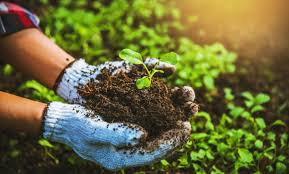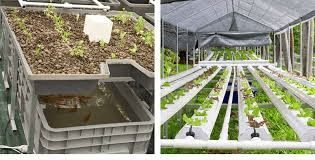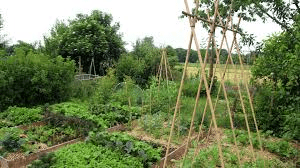Farming practices have evolved significantly over centuries, from traditional methods to highly advanced modern techniques. These practices form the backbone of food production systems, ensuring the supply of crops, livestock, and other essential resources. This article provides an overview of farming practices, discussing both traditional and modern methods, and emphasizing sustainable approaches that balance productivity with environmental care.
Traditional Farming Methods
Traditional farming methods refer to age-old practices passed down through generations. These methods often rely on manual labor, natural processes, and local knowledge. Some key aspects include:
1. Crop Rotation: The practice of growing different types of crops in the same area in sequential seasons to maintain soil fertility and reduce pest and disease cycles. For example, after harvesting a nitrogen-depleting crop like maize, farmers may plant legumes that restore nitrogen levels in the soil.
2. Slash-and-Burn Agriculture: Trees and vegetation are cut down and burned to clear land for planting. This method provides nutrients to the soil but can lead to deforestation and soil degradation if not carefully managed.
3. Subsistence Farming: Farmers grow crops and raise livestock primarily for their own family’s consumption. This is common in rural areas where commercial farming is not feasible.
4. Terracing: Used on hilly terrains, terracing involves creating steps on the slopes to reduce soil erosion and water runoff. It helps make farming possible in mountainous regions.
Modern Farming Techniques
Modern farming techniques focus on improving efficiency and productivity using advanced tools, machinery, and technology. These methods are often used in commercial farming to meet the growing demand for food. Key modern farming techniques include:
1. Precision Farming: Involves using technology like GPS, sensors, and data analysis to optimize farming practices. This ensures efficient use of water, fertilizers, and pesticides, reducing waste and increasing yields.
2. Mechanization: The use of machines such as tractors, harvesters, and plows in farming reduces labor intensity and speeds up various farming tasks, from planting to harvesting.
3. Genetically Modified Crops (GMOs): GMOs are crops that have been genetically engineered to resist pests, diseases, and environmental conditions, ensuring higher yields.
4. Irrigation Systems: Advanced irrigation systems like drip or sprinkler irrigation allow precise water delivery to crops, improving water efficiency and crop growth.
Organic Farming

Organic farming is a sustainable approach that avoids synthetic inputs like chemical fertilizers, pesticides, and genetically modified organisms. It focuses on maintaining soil health, biodiversity, and ecological balance. The key principles include:
1. Composting: Organic waste is composted to create natural fertilizers that enrich the soil and promote healthy crop growth.
2. Natural Pest Control: Organic farming relies on biological pest control methods, like introducing beneficial insects (e.g., ladybugs) to control pests without using harmful chemicals.
3. Crop Diversity: Organic farms often grow a variety of crops to promote biodiversity, improve soil health, and reduce the risk of pest infestations.
4. No Synthetic Inputs: Organic farmers use natural inputs such as manure and mulch, avoiding synthetic fertilizers, herbicides, and pesticides.
Sustainable Farming Practices
Sustainable farming focuses on farming methods that meet current food needs without compromising future generations’ ability to produce food. Some sustainable practices include:
1. Conservation Tillage: This involves reducing or eliminating plowing to minimize soil erosion, retain moisture, and maintain soil structure.
2. Agroforestry: The integration of trees into farmland helps improve soil health, provide shade for crops, and create habitat for wildlife, enhancing biodiversity.
3. Cover Cropping: Planting cover crops during off-seasons protects soil from erosion, enhances soil fertility, and helps control weeds.
4. Water Management: Efficient water use, such as rainwater harvesting and drip irrigation, ensures sustainable water resources for agriculture.
Intensive vs. Extensive Farming
Intensive and extensive farming represent two different approaches to farming, each with its benefits and challenges:
1. Intensive Farming: This approach involves maximizing output from a small area of land, often through the use of high-yield crops, chemical inputs, and machinery. It can lead to high productivity but may cause soil degradation and environmental stress.
2. Extensive Farming: This method relies on larger land areas with fewer inputs, using natural resources for crop growth. While it has a lower environmental impact per unit of land, it often results in lower yields compared to intensive farming.
Conventional Farming Systems
Conventional farming involves the use of modern agricultural methods, including the application of chemical fertilizers, pesticides, and herbicides to boost crop production. Some characteristics of conventional farming include:
1. High Input Use: Farmers rely on chemical fertilizers to promote rapid crop growth and pesticides to control pests and diseases.
2. Monoculture: Conventional farming often involves growing a single crop species over large areas, which simplifies management but can lead to soil depletion and pest problems.
3. High Productivity: The focus is on maximizing yield and efficiency to meet large-scale food demands.
4. Reliance on Technology: Machinery, genetically modified seeds, and irrigation systems play a significant role in increasing productivity in conventional farming.
Read Also: 17 Medicinal Health Benefits Of Ambrosia psilostachya (Western Ragweed)
Hydroponics and Aquaponics

Hydroponics and aquaponics are innovative farming systems that allow crops to grow without soil, offering solutions for food production in areas with limited land or water resources.
1. Hydroponics: This system grows plants in nutrient-rich water solutions instead of soil. Advantages: It allows for efficient water use, faster plant growth, and higher yields in a controlled environment.
2. Aquaponics: Aquaponics combines fish farming (aquaculture) with hydroponic crop production. The waste produced by the fish provides nutrients for the plants, while the plants help purify the water for the fish. Benefits: It creates a self-sustaining ecosystem and reduces the need for chemical fertilizers.
Mixed Farming
Mixed farming is a practice that combines both crop and livestock production on the same farm. This method offers several advantages:
1. Diversified Income: By growing crops and raising animals, farmers have multiple sources of income, reducing financial risks.
2. Nutrient Recycling: Manure from livestock can be used as a natural fertilizer for crops, reducing the need for chemical inputs and improving soil health.
3. Efficient Land Use: Mixed farming ensures that every part of the farm contributes to productivity, maximizing resource use.
4. Sustainable Practice: It promotes biodiversity, improves soil fertility, and reduces environmental impact compared to monoculture farming.
Crop Rotation and Polyculture
Crop Rotation is a farming practice where different crops are planted in the same area over sequential seasons. It helps maintain soil health, reduce pest and disease cycles, and enhance nutrient levels. For example, after growing nitrogen-depleting crops like corn, farmers may plant legumes that naturally restore nitrogen to the soil. This method reduces the need for chemical fertilizers and promotes sustainability.
Polyculture involves planting multiple crops in the same space at the same time. This biodiversity helps reduce pest outbreaks and improves soil fertility. For instance, growing beans, corn, and squash together, known as the “Three Sisters,” helps each plant support the others.
Livestock Farming Methods
Livestock farming involves raising animals for food, fiber, and other products. There are various methods for managing livestock:
1. Free-Range Farming: Animals roam freely in natural environments. It promotes animal welfare and provides healthier products but requires more land.
2. Pasture-Based Farming: Animals graze on pastures, which improves their diet and the quality of meat or dairy products. However, it requires large areas of pasture land.
3. Intensive Farming: This method involves raising large numbers of animals in confined spaces. It is efficient for producing large quantities of products but raises concerns about animal welfare and environmental impact.
4. Organic Livestock Farming: Organic standards are followed, including no use of antibiotics or synthetic hormones, and animals are raised on organic feed. It promotes sustainability but often has higher costs.
Read Also: 15 Medicinal Health Benefits Of Aleppo Pepper (Capsicum annuum var. annuum)
Permaculture Farming

Permaculture is a design system that focuses on creating sustainable agricultural ecosystems that mimic natural environments. Key principles include:
1. Permanent Agriculture: Unlike conventional farming that often depletes resources, permaculture aims to create self-sustaining ecosystems.
2. Resource Efficiency: Everything in a permaculture system is interconnected. Waste from one part of the farm (e.g., animal manure) is used as a resource for another (e.g., fertilizer for crops).
3. Biodiversity: Permaculture encourages the use of a variety of plants and animals, fostering an environment that resists pests and promotes soil health.
Permaculture farming reduces dependence on external inputs and minimizes environmental harm while supporting long-term sustainability.
Precision Farming
Precision Farming uses advanced technology like GPS, sensors, and data analysis to manage crops and livestock efficiently. Key techniques include:
1. GPS-Guided Machinery: Tractors and equipment are guided using GPS, ensuring that fields are plowed, fertilized, and irrigated with precision, reducing waste.
2. Remote Sensing: Drones and satellites monitor crop health, soil moisture, and other conditions in real-time, allowing farmers to make informed decisions.
3. Data Analytics: Farmers use software to analyze data and optimize irrigation, fertilization, and harvesting, improving yields and reducing costs.
Precision farming helps increase productivity and reduce environmental impacts by ensuring resources are used only where needed.
Agroforestry Practices
Agroforestry is the integration of trees into agricultural landscapes. The trees improve soil health, provide shade, and enhance biodiversity. Some common agroforestry practices include:
1. Alley Cropping: Trees are planted in rows with crops grown between them. The trees provide shade, windbreaks, and prevent soil erosion.
2. Silvopasture: Combines trees and grazing livestock on the same land. The trees offer shade to animals, while their leaves enrich the soil.
3. Forest Farming: Farmers grow high-value crops like mushrooms or medicinal herbs under a forest canopy, utilizing the natural ecosystem for support.
Agroforestry improves sustainability, enhances biodiversity, and reduces the need for synthetic fertilizers.
Integrated Pest Management (IPM)
Integrated Pest Management (IPM) is a sustainable approach to controlling pests by combining different methods. Instead of relying solely on pesticides, IPM integrates various techniques to manage pest populations effectively. Key components include:
1. Biological Control: Introducing natural predators or parasites to control pests. For example, ladybugs are used to control aphids.
2. Cultural Control: Practices like crop rotation and polyculture reduce pest breeding grounds.
3. Mechanical Control: Physical removal of pests, such as hand-picking or using traps.
4. Chemical Control: If needed, IPM uses pesticides sparingly and only as a last resort, minimizing environmental harm.
IPM reduces the environmental impact of farming while ensuring effective pest control.
Farming practices have evolved from traditional methods that rely on manual labor and natural processes to modern techniques that use advanced technology and innovation. With the growing demand for sustainable and environmentally friendly farming, organic, mixed, and innovative farming methods like hydroponics and aquaponics are becoming more popular. By understanding these diverse farming practices, farmers can choose the right approach for their land, resources, and goals.
Do you have any questions, suggestions, or contributions? If so, please feel free to use the comment box below to share your thoughts. We also encourage you to kindly share this information with others who might benefit from it. Since we can’t reach everyone at once, we truly appreciate your help in spreading the word. Thank you so much for your support and for sharing!
Read Also: How Long Does It Take a Hazelnut Tree to Produce Nuts?

